
he competitiveness of the U.S. economy was on a lot of minds in D.C. this fall. Fed Chairman Ben Bernanke, within a week of his bold move to cut interest rates, delivered a speech to the U.S. Chamber Education and Workforce Summit on the topic in late September:
“The state of technology is affected both by the creativity and knowledge of scientists and engineers engaged in formal research and development as well as by the efforts of skilled workers on the shop floor who find more efficient ways to accomplish a given task,” he said. “Managers who develop a new business plan or find new ways to use evolving technologies can also be thought of as adding to the ‘intangible,’ or knowledge-based, capital of the firm, which by some estimates is comparable in importance to physical capital such as factories and equipment.”
The need for such innovation has never been greater, he suggested, given such factors as globalization, technological development and an aging society. Today, he said, “there are about five working-age people [20-64] for every person aged 65 and older. By 2030, the ratio will be about three-to-one.”
A week before his speech, corporate and government leaders gathered at the inaugural National Summit on American Competitiveness Summit, hosted by the U.S. Department of Commerce.
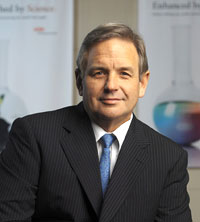
In addressing such topics as education, energy and partnerships, the participants brushed against such issues as immigration, corporate taxation and the lingering importance of manufacturing.
Chad Holliday, chairman and CEO of DuPont and part of the team that put together the influential “Rising Above the Gathering Storm” report on the shortcomings of U.S. competitiveness, said free flow of capital was crucial.
“DuPont does business in 70 countries, but we have to have capital flowing freely. Second is the rule of law, which is our bedrock. We have to watch the over-regulation tendency we have now. We’re in lawsuits gone wild … if we don’t find a way to keep our bedrock in law, we’re in trouble.”
Floyd Kvamme, partner emeritus with California venture capital firm Kleiner Perkins Caufield & Byers, agreed. The former executive with Fairchild Semiconductor also called attention to the intrinsic ties between innovation and making things.
“We put facilities outside the U.S. far more for tax and regulatory reasons than other reasons,” he said, pointing out that the substantially greater return on investment in China for a $3-billion semiconductor plant. “We have to care about manufacturing, because some carpenters and electricians built that place,” he said.
The U.S. federal corporate tax rate is 35 percent. Kvamme declared that the tax structure can represent up to 20 percent of a project’s cost in the U.S.: “That makes a big difference in structuring your plants,” he said. “Look at all the activity we go through with companies in the Cayman Islands – that’s not very productive stuff. Everybody looks at Ireland, and one reason is they have a 10-percent tax rate. Get with it.”
In a separate discussion, Intel Chairman Craig Barrett said, “We could probably be successful if we never hired another employee in the U.S. … but I want my children to have a competitive education. I’m very interested in how our young people are prepared to compete with their counterparts in China, Brazil and Israel.”
But he too sees taxes as basic.
“Eastern Europeans have done the same thing as Ireland, and the French are screaming, ‘How can you do that?'” said Barrett. “The U.S. has to work its education system and work force system. But it also has to look around the world. If it’s a billion-dollar difference between the U.S. and Ireland to locate a manufacturing facility,
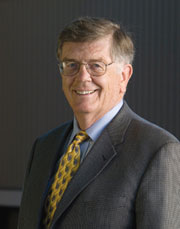
then it is my fiduciary responsibility to go look at Ireland.”
“The U.S. is just driving up the cost of doing business,” added Harvard Business School Prof. Michael Porter. “We keep layering on costs and complexity. The No. 1 cost is litigation and regulatory costs. We have to find a way to recalibrate.
It is now providing more of a bite. Our capital markets are a precious asset, and yet we’re starting to encumber the process of capital raising and allocation such that we’re starting to see people do IPOs in other countries now. This is a wakeup call to me.”
“Read a 10-K, and ask who is being served by these 40 to 50 pages of legalese,” said Holliday. “Realize as I sign off every quarter with the fear of wearing stripes – do I give my competition a lead or risk not properly disclosing? The actual cost is not that big a number. The cost in mindset and distraction is huge.”
The complexity is not limited to business. Kvamme mentioned that programs to address the country’s much-lamented skills deficit in math and science (now in the bottom 15 percent in the world) number more than 200, and recommended an equivalent process to the military base realignment and closure commission in order to pick the cream of the crop.
The rollback on H1B visas for skilled foreign workers, combined with national concerns about illegal immigration, has fueled further angst among corporate leaders. Taking the visa level back up to 150,000 from 65,000 is a start,
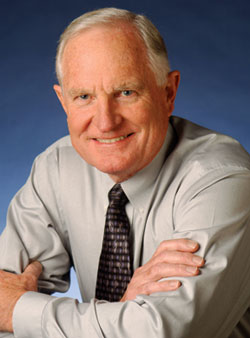
said Kvamme, but it has to be followed by a green card process.
“If you keep people here six years on H1Bs and then send them home because they can’t get a green card, you have turned them into tremendous competitors,” he said.
“If we try to protect ourselves from everything, we will not be a success,” said Holliday. “Many countries are facing declining population, such as Japan. If we seize the opportunity to open up to immigration now, it can be our greatest strength going forward.”
“Yes, we need to benefit from immigrants as an innovative force in our economy,” said Porter, but “we can’t use that as a reason for not training our own people.” He said growing inequality based on education and skills is a growing concern. Kvamme suggested that factories may be one place to start redressing that inequity.
“Four of the happiest words in the language are ‘I got the job,'” he said. “People want to work. We put a plant in Singapore in 1967, and another in Malacca, Malaysia, and people came out of treehouses. That’s why we need those low-skilled plants in this country. They’ll work up in it. They’ll encourage their kids to go for other positions. Address manufacturing and that starts to address the problem.”
“My biggest concern is we’re going to run out of people to build and run our new plants,” said Susan Story, president and CEO of Gulf Power Co. during the energy panel. “We have to start developing these folks now. We’re now looking at a greenfield site for a nuclear plant. If we select a site this year, it will be 2020 before we have it online. We have to decide today.”
What’s more, said Barrett and others, continuing education needs to become part of a company’s DNA. Barrett said the half-life of knowledge in the semiconductor industry today is “about five years.”
Kvamme said the immigration law needs to happen on the government side. As for business, a loosening of restrictions could help at the plant too.
“Open up,” Kvamme suggested. “Allow your employees to bring their kids to work. Let them see what goes on in a company. It will raise their opinion and their curiosity.”
The timing for getting their attention couldn’t be better, said Gutierrez.
“We wanted the Soviet Union and China to open up and create jobs,” he said. “That’s what we have today. This should be our very best time as a nation. This is exactly the playing field we seek. Every policy, every piece of legislation, should be evaluated on its impact on our nation’s competitiveness. That ability to compete needs to become a passion in every single community in our country.”
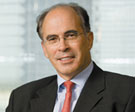
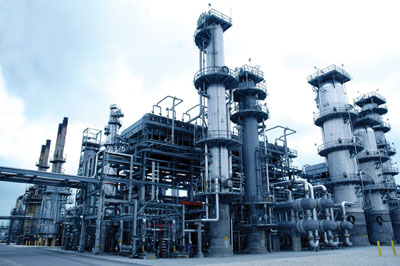
n Sept. 21, Shell Oil Co. kicked off autumn with the announcement it would begin construction on a new 325,000 barrel-per-day (bpd) capacity expansion project at its joint venture Motiva’s refinery (pictured) in Port Arthur, Texas, making the complex the largest refinery in the U.S. and one of the largest in the world, at 600,000 bpd. A concurrent update of existing emissions systems will also take place.
“Shell is committed to meeting the global energy challenge by ensuring our global downstream business maintains a world-class manufacturing capability,” said Rob Routs (inset), executive director, Downstream Royal Dutch Shell plc. “Shell’s investment in the Motiva Port Arthur Refinery expansion will lead to increased supplies of gasoline, diesel and aviation fuels in the U.S.”
While no investment figure was announced for the Shell project, a proposed 260,000-bpd expansion by BP in Whiting, Ind., on hold because of neighbor territories’ worries about emissions into Lake Michigan, has a price tag of $3.2 billion.
efore you check out our own Business Climate rankings in this issue (p. 879), it may be worth cross-checking the city lists below.
The POLICOM “Economic Strength” rankings are issued each year for every metro and micropolitan area in the U.S. by economist William Fruth, based on a “standard of living” point of view that examines 28 long-term trends in earnings and income, job creation, welfare and Medicaid.
“Every one of the 28 things I measure is graded for consistency,” says Fruth. “An inconsistent economy is a tough place to do business.” Most of those ranked high in economic strength “have multiple primary industries feeding their bucket of wealth,” he says.
The best cities for business in the U.S. according to Dow Jones unit MarketWatch include some of the same cities – Charlotte, Nashville, Birmingham and the nation’s capital – based on the presence of top companies and small businesses per capita, unemployment, population growth and job growth.
Site Selection‘s Top 10 large metros (based on 2006 New Plant Database project tallies and published each March) included three common to both Fruth and MarketWatch: Washington, Nashville and Charlotte.
Fruth points to San Diego and Sacramento as two sharp upward movers despite what he calls the state’s “onerous” business climate. And he points to Reno, Nev., as “a real star that has the opportunity to become even better” due to its available land, research university, favorable state corporate tax system and location at the California state line.
Fruth’s top metros only include 13 of Site Selection‘s top 25 metros. “What you measure influences the future economy,” he says. “My measure describes the condition of the current economy. Those who score high in your study are the ones that will have stronger economies in the future.”
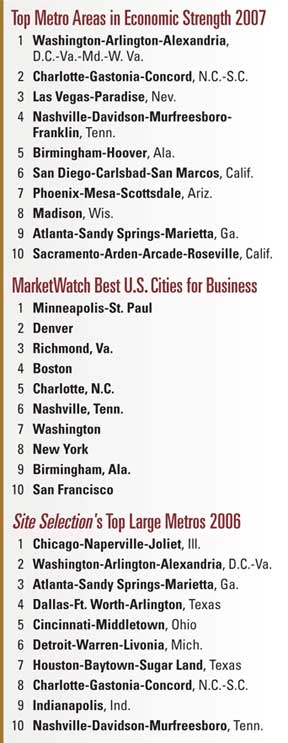
Site Selection Online – The magazine of Corporate Real Estate Strategy and Area Economic Development.
©2007 Conway Data, Inc. All rights reserved. SiteNet data is from many sources and not warranted to be accurate or current.